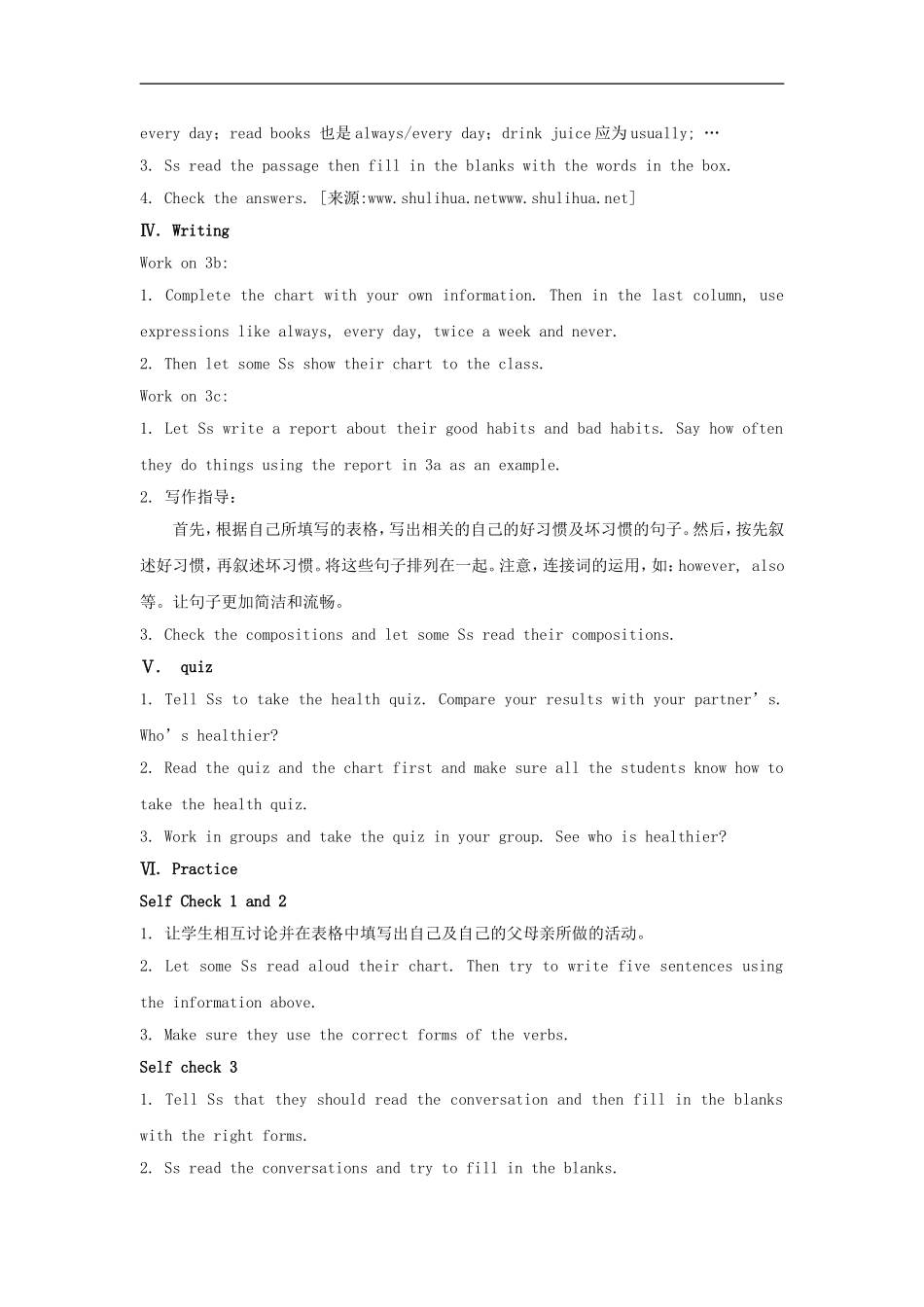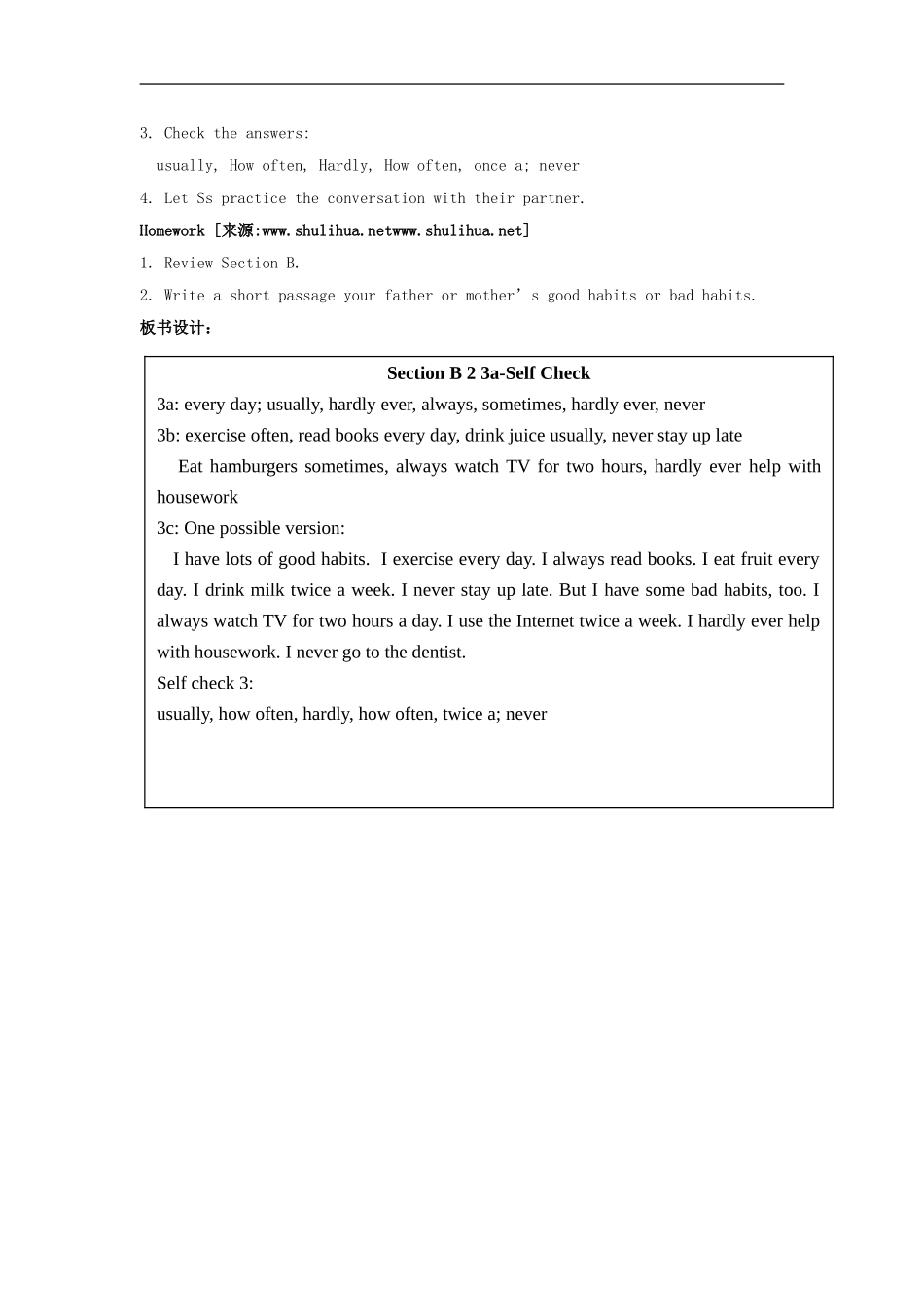Unit 2 How often do you exercise?Section B 2 3a-Self Check 一、教学目标: 1. 语言知识目标:1) 复习询问或谈论别人饮食、锻炼的频率、休息的时间及选择不同频率的理由。2) 能够运用所给的提示,完成对某人饮食习惯的描写。 [来源:www.shulihua.net]3) 总结回顾所有的频率词,并学会运用所学的频率词来谈论某人的生活习惯。2. 情感态度价值观目标:1) 通过小组活动对话、讨论、调查等活动。培养学生们的合作意识和团队精神。2) 谈论日常生活行为习惯,提倡合理安排自己的生活,养成良好的生活习惯,享受丰富多彩的校园生活。 二、教学重难点1. 教学重点:1) 能运所给的提示词来描写个人的饮食起居等方面的习惯。2)能运用一些相关资料对他人进行好习惯与坏习惯的调查。2. 教学难点:能运所给的提示词来描写个人的饮食起居等方面的习惯。三、教学过程Ⅰ. Warming- up and revision1. Have a dictation of the new words and expressions. 2. Let some Ss read the passage in 2b.3. Check the homework. Ⅱ. Presentation1. Show some pictures of your daily activities. Tell Ss your good activities and bad activities. 2. Let some Ss tell about how often they do some activities and judge they are good habits and bad habits. Ⅲ. Practice 1. Look at the information in the chart and complete the report. 2. 阅读指导: [来源:www.shulihua.net]首先,通读短文,了解短文的大体意思。读表格中活动及后面的做此活动所用的时间,并确定做此事的频率,可以在每个活动后面写出相应的频率词。如:Exercise 应用 always/every day;read books 也是 always/every day;drink juice 应为 usually; …3. Ss read the passage then fill in the blanks with the words in the box. 4. Check the answers. [来源:www.shulihua.netwww.shulihua.net]Ⅳ. Writing Work on 3b: 1. Complete the chart with your own information. Then in the last column, use expressions like always, every day, twice a week and never. 2. Then let some Ss show their chart to the class. Work on 3c: 1. Let Ss write a report about their good ...


